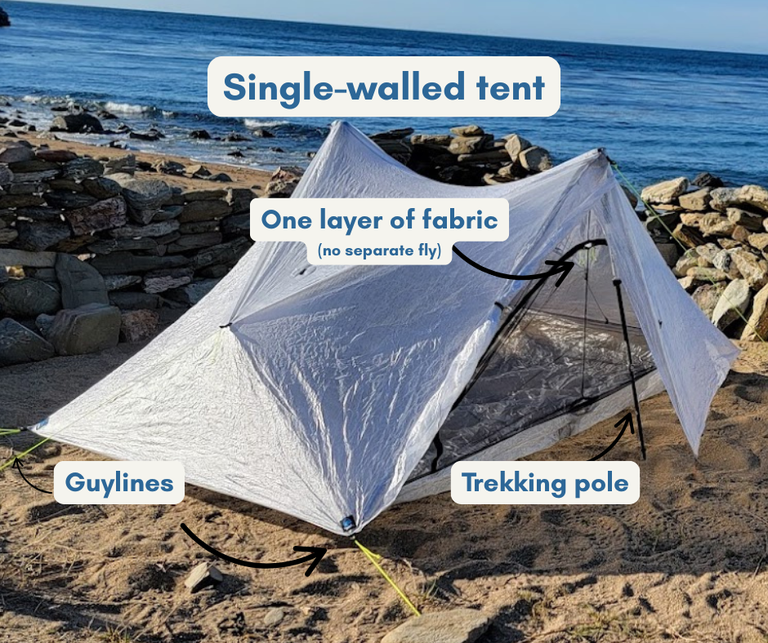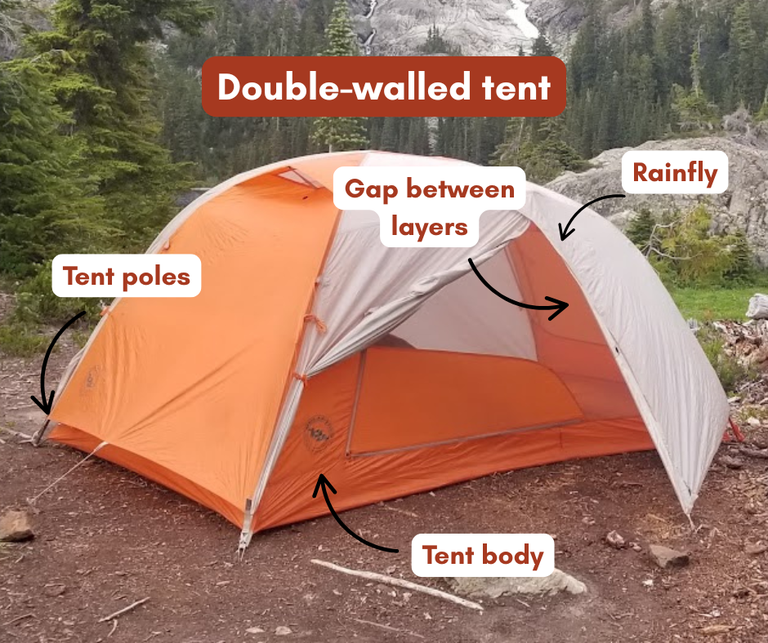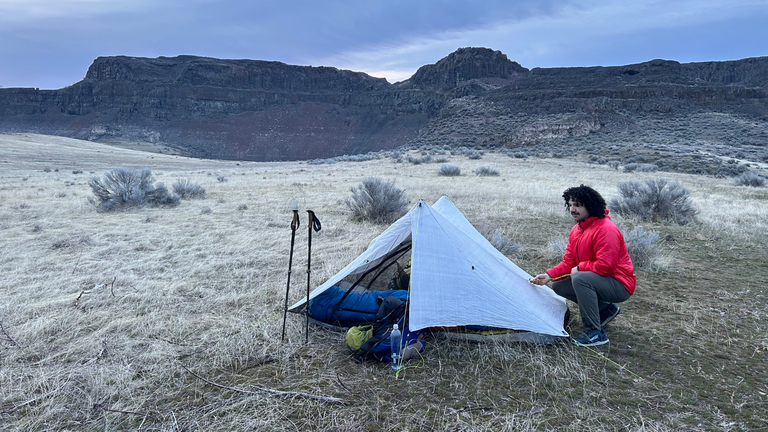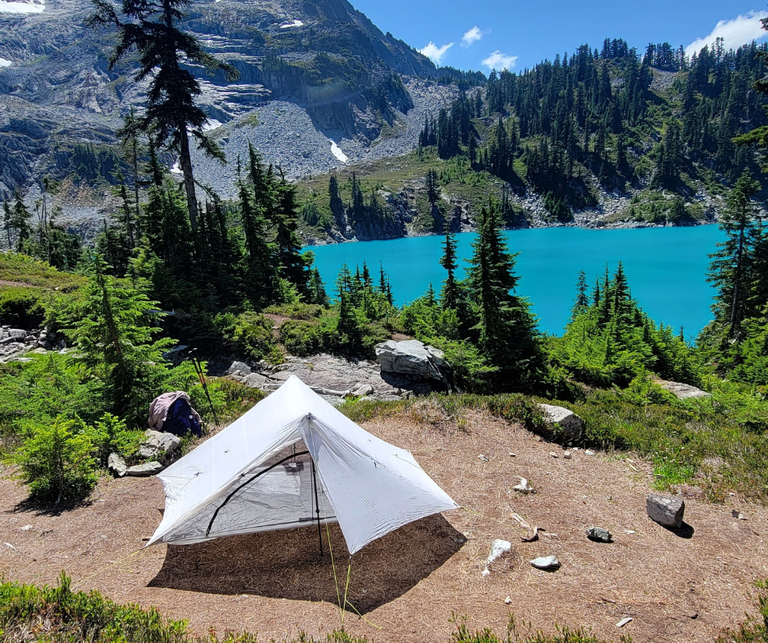 Washington Trails
Association
Washington Trails
Association
Trails for everyone, forever
Have you been shopping for a shelter lately? With all the double-walled and single-walled options, it can feel in-tents. Here’s how to learn if a single-walled tent is right for you. By Joseph Gonzalez
Have you shopped for a new tent lately? There are a lot of options out there, and if you’re in the market for a tent, you might have seen some “single-wall” options. I’ve used both styles for thousands of miles. They each have their benefits, and there’s no right or wrong option. This guide will focus on single-wall shelters so you can learn if they’re the right option for your hiking style and goals. If you’d like to learn more about other options, check out our guide to choosing a tent from the summer 2023 issue of Washington Trails magazine.
Think of tents as falling into two categories: double-walled tents and single-walled tents.

Single-walled tents use trekking poles and guylines. You might need to use rocks to secure guylines on less stake-friendly surfaces. Photo by Joseph Gonzalez
A single-walled tent is made with one layer of fabric. Instead of having a rainfly that’s separate from the tent body, tent body, rainfly and vestibule are all one single component and is usually made from a waterproof material. Instead of collapsible tent poles, they depend on rigging trekking poles, stakes and guylines to stand. Most models are nonfreestanding, so they usually must be anchored to something sturdy (stakes, heavy rocks, etc.).

Double-walled tents have a rainfly and a body that are separate. Photo by Joseph Gonzalez
Double-walled tents are more popular and are made in two segments: an enclosed fabric unit (the tent) with a secondary shell (called a rain fly) with a gap of air in between. Double-wall tents come with collapsible poles and are usually freestanding.
Most hikers will prefer a double-walled tent because of their familiarity, reliability and comfort. But if you’re a weight-conscious hiker who prefers simplicity, a single-walled tent might be for you.
Single-walled tents are lighter in weight than double-walled options. Rather than have a tent body and rainfly, they’re one unit, so they use less fabric.
Similarly, tent poles only have one use: to keep your tent erect. Single-walled tents incorporate trekking poles instead, which gives your trekking poles a dual purpose and saves you a few ounces.
They’re also simple to set up since there are less parts. Once you have some practice with using stakes and guylines to rig your shelter, making camp is quick and easy.
Finally, the interior of your single-walled tent won’t get wet when you set it up in the rain because the outside of the tent is already waterproof (unlike a double-walled tent, which must be erected first before the rainfly is put on top).

Once you have some practice with using stakes and guylines to rig your shelter, making camp is quick and easy. Photo by Joseph Gonzalez
Condensation can be difficult to manage. Since there’s only one fabric layer, the moisture from the air (whether from rain or your breath) will accumulate on the inside of the tent unless you have proper airflow. There’s no worse feeling than brushing up against the cold, wet interior of a tent first thing in the morning!
Single-walled tents can be expensive. They’re usually made with ultralight, waterproof materials that are quite pricey. And since some of the best single-walled tents are made by smaller companies, you might be waiting awhile for your tent to arrive once you purchase it.
Of course there’s nothing wrong with a double-walled tent depending on your needs. Even though they’re a bit heavier and more complicated to pitch, they tend to perform better in rain, don’t suffer from the condensation issue and usually have a bit more storage than their single-walled counterparts.

Summer trips in Washington's mountains below the snowline are the perfect use for single-walled shelters. Photo by Joseph Gonzalez
Start by evaluating your goals. Why do you like to hike and camp and what do you enjoy about it?
A single-wall tent might be good for you if you:
A double-wall tent might be good for you if you:
Opting for a single-walled shelter over a double-walled option won’t make or break your trip, but it can help you optimize your hiking gear list to match your goals. Double-walled options are fine for most of the trips most of us will take, but single-walled tents are a great option for hikers hoping to lighten their load or hike a bit farther.